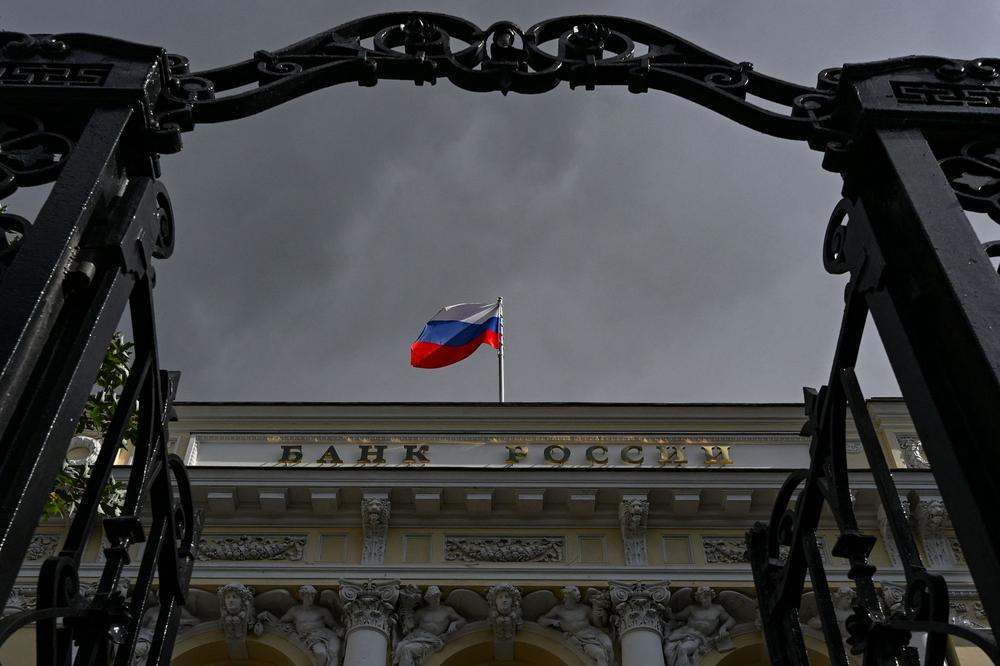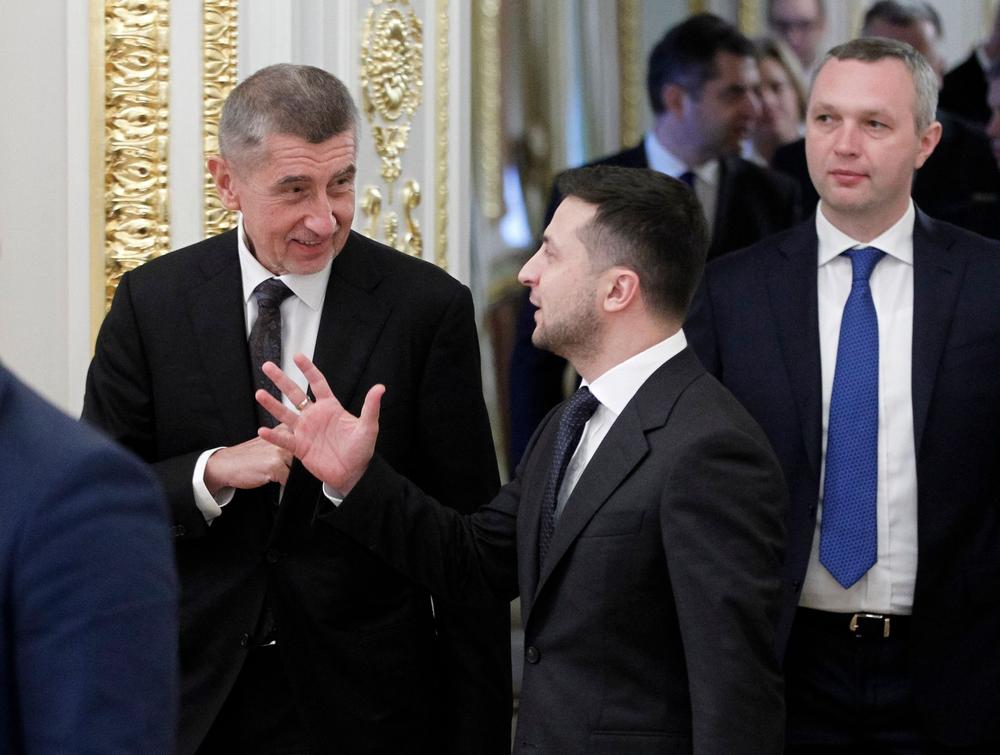Momentum is building to tap more of Russia’s central bank reserves — immobilized after its full-scale invasion of Ukraine — to help fund Kyiv's war effort.
As the U.S. moved to wash its hands of Ukraine’s fate, the gradual realization Russia’s war would not end any time soon and that Kyiv would continue to need large amounts of external funding has spurred European initiative to unlock the cash tied up in Russia’s frozen assets.
And Kyiv will need all the money it can get. Recent estimates put Ukraine’s external financing needs at $65 billion for 2026–2029. The country is also currently negotiating with the International Monetary Fund on a new loan program, as its current one is almost up.
The most recent proposal, distributed to EU ambassadors in September and seen by the Kyiv Independent, outlines an innovative legal and financial plan to lend 140 billion euros of the frozen assets to Ukraine. While it would not represent a full confiscation of Russian assets, the new plan would be a big step forward for the EU and Ukraine’s needs — but many questions remain.
European finance ministers are meeting Oct. 9–10 in Luxembourg and are likely to discuss the plan ahead of a crucial EU leaders meeting on Oct. 23.
Here’s everything you need to know.
What is the EU’s latest proposal on Russia's frozen assets?
An estimated $300 billion in Russian central bank reserves remain frozen globally, with about two-thirds of that — roughly 185 billion euros — held by Belgium-based financial institution Euroclear.
The idea is to redirect 185 billion euros to the EU via "a tailored debt contract with Euroclear," according to the document.
The contract would take the form of an IOU to Euroclear, collectively guaranteed by European countries, which Euroclear would receive in exchange for releasing 185 billion euros in cash to the EU.
Of this sum, the EU would lend up to 140 billion euros to Ukraine with zero percent interest, which would only be repaid should it receive reparations from Russia.
The remainder, about 45 billion euros, would be set aside to repay the Group of Seven (G7)-led Extraordinary Revenue Acceleration (ERA) loan to Ukraine, a $50 billion initiative agreed on in 2024 and backed by interest payments on the frozen assets.
Unlike the ERA, the European Commission is now seeking to unlock the full 185 billion euros held by Euroclear, rather than just the interest it generated. But crucially, the proposal avoids outright confiscation of Russia’s assets — should Russia pay Ukraine reparations, Kyiv would pay back Brussels, who would pay back Euroclear, who would then honor its liability to the Russian Central Bank.
However, in the near-certain case that Russia never pays reparations, and if Russia’s assets remain immobilized under EU sanctions law, no one will have to repay.
"If Russia doesn’t pay reparations, Ukraine doesn’t need to pay back its loan to the EU, the EU does not need to pay back its IOU, and Russia's state assets remain immobilized. Thus, the EU taxpayer is not on the hook even if Russia never repays," Bart Szewczyk, lawyer at multinational firm Covington & Burling, told the Kyiv Independent.
The proposal also recognizes that it relies on Euroclear investing in the debt contract issued by Brussels, but says rules "to oblige" Euroclear to make this investment could be set out.
The Orban question
This latest proposal poses more questions than answers.
Firstly, the assets must remain immobilized for the plan to work. Currently, EU sanctions are put to a bi-annual vote which requires unanimity among EU member states — a ritual that Prime Ministers Victor Orban of Hungary and Robert Fico of Slovakia have repeatedly threatened to derail.
The two-pager proposes a legal mechanism to switch the bi-annual unanimous vote to a single vote by a qualified majority — typically 15 EU countries representing at least 65% of the EU population.
The single vote would guarantee that the assets remain frozen until Russia pays Ukraine reparations.
However, the workaround is unprecedented in EU law, and the Commission is seeking near consensus for the plan. It is particularly important to get Belgium on board as the host of Euroclear.
Belgian Prime Minister Bart De Wever has expressed concern over the plan and wants to ensure that any legal risks are shared with other European countries.
Secondly, if the plan works, it’s not clear how exactly the money will be spent, or even if the entire sum will be sent to Ukraine.
While the two-pager begins by proposing "a reparation loan to Ukraine," it ends by stating that the cash could partly be used for "European defense cooperation" and "to cover budget needs."
But in an apparent contradiction, German Chancellor Merz recently wrote in an FT op-ed that the cash should be "solely used to finance Ukraine’s military equipment, not for general budgetary purposes."
Complicating matters further, Ukraine’s Deputy Finance Minister Aleksander Kava said this week that Kyiv wants flexibility on how to use the cash, including reconstruction and the budget deficit.
"It would be preferable for part of the 140 billion euros that Ukraine is set to receive to be directed towards reconstruction and compensation for war-related damages and losses," Benjamin Hilgenstock, senior economist at Kyiv School of Economics, told the Kyiv Independent.
"Ukraine certainly needs a lot of money for weapons to defend itself, but the money that we are discussing here can only be spent once," he added.
What exactly are the Russian frozen assets, and how have they helped Ukraine so far?
Like other central banks, the Russian central bank holds foreign reserves abroad at partner institutions. This practice dates back to the nineteenth century.
Foreign reserves are assets held in foreign currencies, and can include cash, bank deposits, bonds, and gold. Central banks use reserves to stabilize their currency and intervene in times of crisis.
Approximately 210 billion euros of Russia’s reserves were in the European Union when Russia launched its full-scale invasion of Ukraine, and were frozen in place on Feb. 28, 2022, when the European Union passed its third sanctions package against Russia.
G7 countries and others, including Switzerland and Singapore, near-simultaneously immobilized Russian reserves held in their own jurisdictions. It is estimated that approximately $300 billion is frozen as of 2025.
About two-thirds of the frozen assets (185 billion euros) are held at Euroclear, a Belgium-based central securities depository — key cogs in the global financial architecture which facilitate financial transfers.
Global leaders have exercised extreme caution as foreign reserves are uniquely protected under international law. Christine Lagarde, president of the European Central Bank, reiterated this week that any scheme should not undermine the role of the euro nor be contrary to international rules.
However, the funds held at Euroclear have become the focus of EU efforts to put the money to use, due to both their magnitude and the features of Euroclear’s business model.
As Russia’s securities (mostly short-term bonds) held at Euroclear gradually matured and turned to cash, Euroclear deposited it at the European Central Bank, where it earned interest.

 Milano. Arriva in ufficio senza caffè di Starbucks: licenziata dipendente casa di moda
Milano. Arriva in ufficio senza caffè di Starbucks: licenziata dipendente casa di moda